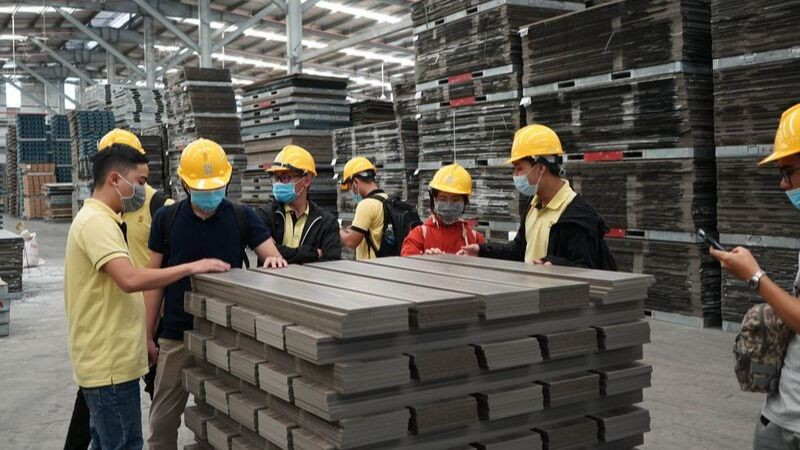According to the Vietnam Timber and Forest Products Association (VIFOREST), Vietnam’s wood export orders for the US in the first half of the year fell by 50-55% depending on categories, while those for the EU market also shrank by up to 60%.
In the meantime, India and the Middle East are becoming prospective markets for Vietnamese wood products although revenue remains low with no large and long-term orders.
India is not Vietnam’s main timber export market but customs data showed revenue in the early months of 2023 had already reached 21 million USD, three times higher than the same period last year. Vietnam’s main export to India is medium-density fibreboard (MDF), which accounts for 47% of total exports.
Similarly, Vietnam’s wood exports to Middle Eastern countries also witnessed strong growth, with revenues to the United Arab Emirates up by 38% to 11 million USD. Primary exports to the market were construction wood, chairs and other wooden items.
But according to enterprise leaders, the tastes in the Indian market are different from that of the European and US markets, as their favoured products are not being manufactured by Vietnam. For now, only the younger consumers are using products similar to western countries.
For the Middle East, there was an increased demand for construction wood in the early months as they were facing difficulties in securing timber products from their traditional markets due to those markets’ economic and political uncertainty. That is why they approached Vietnamese wood exporters.
Although their purchasing power remains limited, India and the Middle East’s rising import of Vietnamese timber is offering new hopes for Vietnamese enterprises amidst the current crisis.
VIFOREST Chairman Do Xuan Lap said the US is still the most important market for Vietnamese timber. To increase the competitive advantage in this market, Vietnamese enterprises need to review their strategic products and look into products with high levels of potential with which they have a competitive edge.
For the Indian market, wood enterprises need to learn about the demand for MDF and other wood products. Regarding the Middle East, they need to conduct a thorough survey of the potential for export to this market and the products which are their forte.
In order to compete with timber enterprises from India, Indonesia and the Middle East, Vietnamese enterprises are looking to renovate technology to lower prices and enhance the quality of their products.
















